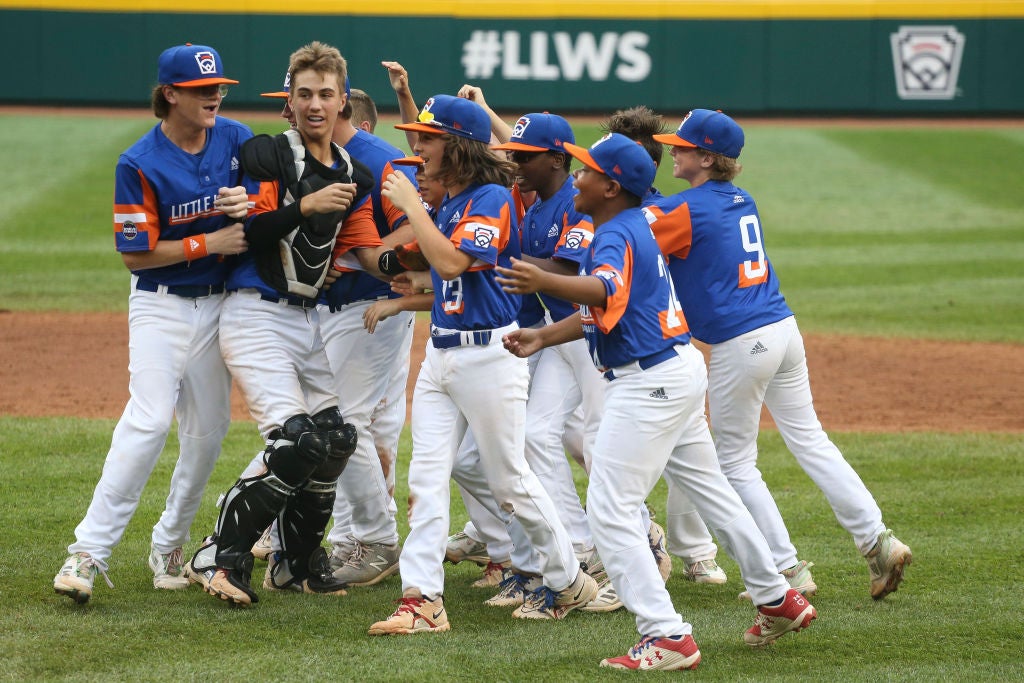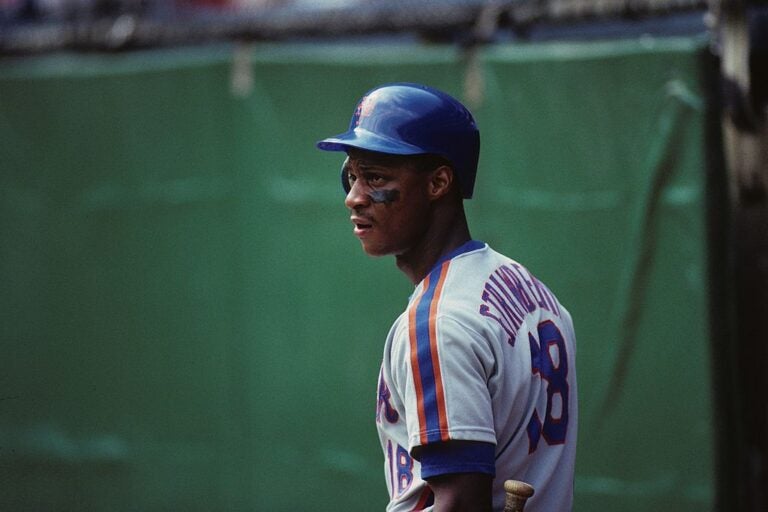Out at Home: How High Costs and Low Representation Prevent Black Youth From Playing Baseball
Why this matters
Once, baseball was accessible to Black youngsters in cities like Oakland and Washington. No longer. Today, high participation costs and a lack of representation at all levels of the sport discourage participation. Major League Baseball, the new Players Alliance, and other organizations are attempting to reverse this trend. But more work – and more investment – will be needed.
Drake Lewis, a recent graduate of Maret School in Washington, D.C., noticed something peculiar as he played travel baseball for many years. He struggled to find stores where he could buy baseball equipment in his predominantly Black neighborhood.
“Baseball isn’t valued where I live,” said Lewis, who is Black.
Among Black youth living in urban areas, Lewis’ story isn’t unique. While Black and White students report playing high school baseball at the same rate – 10 percent – research from the Aspen Institute’s Reimagining School Sports initiative has identified stark differences based on where those students live.
Only 6 percent of Black students at urban public schools have played high school baseball, a lower percentage than for Black students at rural (14 percent) and suburban (11 percent) schools. By contrast, 10 percent of White students from urban schools have played baseball, nearly the same rate as rural (11 percent) and suburban (13 percent) students who are White.
That gap both reinforces and helps to explain the growing disconnect between baseball and Black America. And it largely stems from a parallel crisis of affordability and accessibility, generated by the highly commercialized youth sports industry.
“When you see people who look like you, that makes you enjoy playing even more, and it feels like you belong.”
Years ago, Black kids in America’s cities could play baseball with friends on neighborhood fields. They could compete in community-driven local leagues, receiving quality coaching and instruction.
But those days are long gone. In the here and now, travel ball dominates the youth baseball culture. Most of those teams are based in White communities, not Black ones. They are expensive, too: Lewis’ team, DC Dynasty, charges $1,850 to play on its 16U Gold team – and that’s before equipment and travel fees.
The result? Many Black children are left behind, simply because they can’t afford to participate.
“Unfortunately, now you don’t see access to fields. You see chain-linked [fenced] fields,” former Major League Baseball player Jeffrey Hammonds, associate director of player programs at the MLB Players Association, said at the Aspen Institute’s Project Play Summit in 2020. “Understand that the growth and the profit that has been generated through youth and travel sports, they’re putting a lot of money on these fields. These fields are not for the public to go practice and just play on.
“I don’t understand how you have to pay $10, $15, or $25 just to go out there and play, or you’re being pushed off the field because you don’t have parental supervision or didn’t sign up on a website for that block of time. We’re reducing kids from organically playing.”
Consider the state of baseball in Oakland, California. For decades, Oakland produced many elite Black MLB players, such as Frank Robinson, Rickey Henderson, Dave Stewart, Joe Morgan, Curt Flood, Jimmy Rollins, and many more. They honed their skills with long-running organizations like the Babe Ruth League.
At its peak from the mid-1980s to mid-1990s, Oakland’s Babe Ruth League had 1,200 players and 92 percent of them were Black, according to KTVU Fox 2 in Oakland. Today, the league has fewer than 250 players and has 40 percent Black representation, mirroring the community’s changing demographics. Many Black families moved out of once-predominantly Black neighborhoods due to rising home prices and gentrification.
Recently, Oakland-based Coaching Corps launched its Racial Equity and Access in Youth Sports Task Force to help level the playing field in Oakland. In addition, the Aspen Institute’s Project Play will produce in 2022 a State of Play Oakland report, in partnership with Stephen and Ayesha Curry’s Eat. Learn. Play. Foundation, that will offer recommendations on how to get more quality sports access to underserved youth.
Then there’s the reality that too many Black kids don’t see themselves in baseball. That’s true in the major leagues, where Black players accounted for just 8 percent of the players on Opening Day rosters in 2020, down from a 1981 peak of 19 percent, according to the Society for American Baseball Research. And it’s true at the lower levels of the sport..
“What’s weird about Dynasty is we have a decent number of minority baseball players on the team even though we played a lot of all-White teams,” said Lewis, the young Washington, D.C., baseball player. “When you see people who look like you, that makes you enjoy playing even more, and it feels like you belong.”
Related: My COVID-19 Year as a Youth Sports Parent and Why I Fear What’s Next
Baseball is not the only sport with accessibility problems. Across the flawed U.S. youth sport development system, children are ejected at young ages based on their playing ability and/or ability to pay. It’s the up-or-out model of management consulting firms, applied to America’s kids: Either you’re talented or wealthy enough to keep moving up in your sport, or you’re discarded and forgotten.
For a child to enjoy what many parents view as a quality sports experience, their family must possess certain luxuries: the financial luxury to spend thousands of dollars a year on equipment and team fees as well as the luxuries of time and transportation to ferry their child to countless practices, games, and tournaments.
Black kids in low-income areas often lack all three. “We need parks and recs to know we need them,” Hammonds said. “Hold free clinics, give out free equipment and gloves.”
The White-Black divide in baseball is hardly new. In 2003, a Gallup poll found that 5 percent of Black Americans said baseball was their favorite sport to watch, down from 43 percent in 1960. And while economic disparities play a major role, there are other driving factors.
In 1986, Bo Jackson was the No. 1 overall pick in the National Football League Draft and a fourth-round selection in the MLB Draft. He played both sports professionally, something almost unheard of today. Patrick Mahomes, Russell Wilson, Kyler Murray, Jameis Winston, and Colin Kaepernick were all drafted or pursued by MLB teams before choosing football, even though football has a shorter career shelf life and higher injury risk.
In the eyes of many Black youngsters, there are two paths to professional sports fortune and fame: football and basketball. Baseball is an afterthought.
“These kids don’t feel sometimes that they can be seen [in baseball],” Baseball Hall of Fame member and current MLB advisor Ken Griffey Jr. recently told The Washington Post. “Nick Saban, John Calipari – all these great [college football and basketball] coaches can come to a kid’s house and have dinner with them. The [National Collegiate Athletic Association] allows that.
“But the NCAA doesn’t allow a professional [baseball] team to go visit a kid they may or may not draft. If Nick Saban shows up at your house, everybody in the neighborhood knows it, so the notoriety is there. We don’t have that.”
Research shows that Black children start in organized sports nearly a year later than their White peers, after age 8. Once they begin, their parents are more motivated to keep them in sports to realize long-term rewards. According to 2019 research by the Aspen Institute and Utah State University, Black parents rated the pursuit of a college scholarship as 23 percent more important than White parents did, and Black parents rated a pro sports opportunity as 26 percent more important.
Similarly, Aspen Institute research has found that 50 percent of Black high school students list college scholarships as a motivation for their choice to play sports, compared to 36 percent of White students.
As such, it’s hardly surprising that Black youth have migrated away from baseball and toward football and basketball. In a given season, NCAA Division I baseball teams can offer up to 11.7 scholarships split among 27 to 35 players. Football teams can offer 85 scholarships and basketball teams 13.
Related: What American Youth Sports Can Learn from the World
The upstream result? College sports look a lot like professional sports: In Division I, football and basketball players are majority Black, while baseball players are 79 percent White.
“Baseball has become too White,” University of Michigan baseball coach Erik Bakich said at the Aspen Institute’s Project Play Summit in 2019. “There’s a lot of great athletes out there, and I think it’s ridiculous the costs of travel ball and some of these showcases. It negates opportunities for a lot of kids.”
Michigan is trying to change that dynamic – not only for racial equity but also to win games. Bakich intentionally recruits from inner cities, and in 2019, the Wolverines reached the College World Series with a roster of 20 percent minority players. Bakich talks often about how he wants a team that looks like America, a country in which more than two-fifths of the population now identify as people of color.
Michigan built a pipeline from the Amateur City Elite program sponsored by the Chicago White Sox and MLB’s regional prospect development events. These events, such as the Hank Aaron Invitational, invite some of the nation’s top Black youth players to learn the game from retired major league coaches and players. Pro and college scouts are also invited to attend.
This year, MLB announced it would donate up to $150 million to the Players Alliance, a nonprofit formed in 2020 by more than 100 Black current and former players in the wake of George Floyd’s death. That money is intended to boost Black participation in baseball by funding leagues, equipment, tournaments, clinics, playground activities, and educational grants and scholarships, as well as programs to help support baseball in city and public schools.
MLB also has urban youth academies in Cincinnati, Compton, Dallas, Houston, Kansas City, New Orleans, Philadelphia, and Washington, D.C. In New Orleans, Xavier University of Louisiana, a historically Black institution, is playing college baseball for the first time since 1960 – and using MLB’s Urban Youth Academy at Wesley Barrow Stadium for practices and games.
In February, 10 of the school’s 43 players were alumni of the academy. “Kids can now see the whole pipeline,” Eddie Davis, academy’s director, told The New York Times. “The younger kids can see former academy kids playing high school on the same field and now playing college on the same field. It’s tangible. Before, it was kind of grayish; you really can’t touch it. But now, you can.”
The lesson? Accessibility matters. So does representation. Children are more likely to play a sport when it’s affordable to do so – and when they see people who look like them playing and coaching. If you want to grow Black youth participation in baseball, then show kids like Lewis that they are truly valued.
Jon Solomon is editorial director of the Aspen Institute Sports & Society Program, whose main initiative is Project Play. Learn more about Project Play here.
Monthly Issue
Rediscovering America's Pastime
For baseball to survive as America’s pastime, the sport known for tradition and nostalgia will need to broaden its appeal across racial, cultural, and gender lines.
For the kid who swings a bat for the first time; the front office data analyst looking for the next big star; the minor leaguer hoping to make it to the bigs; and the major league manager looking to stay on top, can a centuries-old sport become more diverse and inclusive in new ways?



